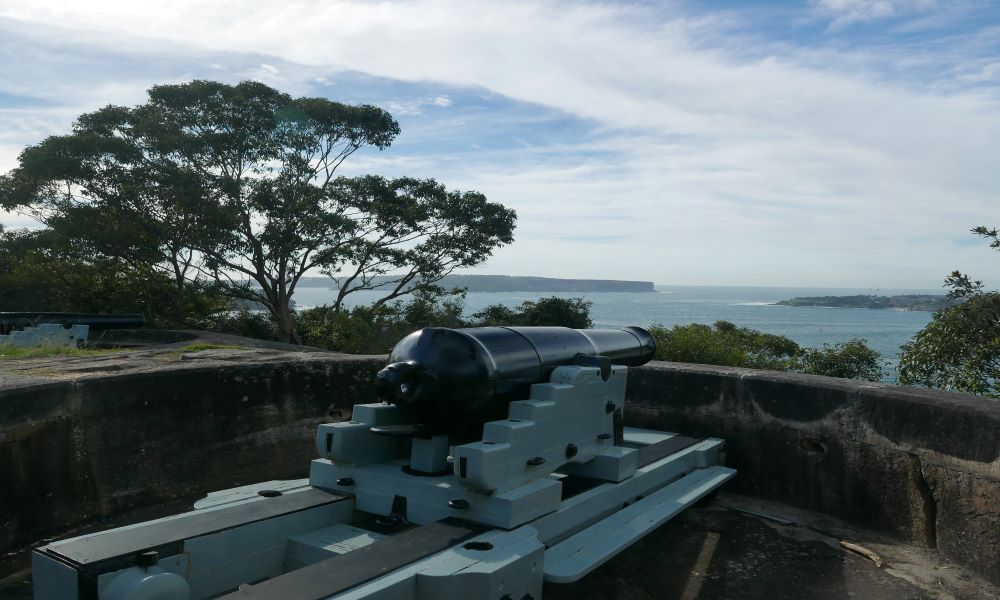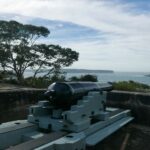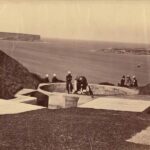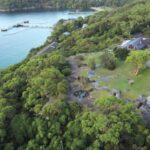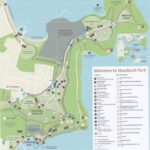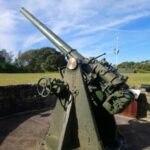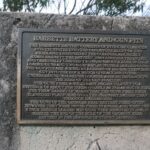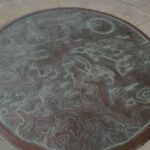As a remote and vulnerable port at the far end of the world, Sydney’s requirement for fortifications to defend its harbour was recognised soon after the establishment of the colony in 1788.
The first batteries, mounting piddly 6 pounders were located around Sydney Cove, under what is now the southern end of the Harbour Bridge. A little later, a second battery was emplaced where the Opera House now stands.
Enthusiasm for defences ebbed and flowed with the ups and downs of wars in Europe, with hastily built fortifications falling into disrepair as threats waned, until the next conflict, or threat of conflict, encouraged urgent repairs and new works. Threats were perceived as coming from the French and the Spanish, who were both active in the Pacific, as well as from the Americans who had only recently declared independence from Britain.
As ranges of shipboard weaponry increased, defences closer to Sydney Heads that could challenge ships further from the rudimentary settlement at Sydney Cove made a lot of sense, and in 1801, a small battery was cut out of sandstone on Middle Head (see video for an understanding of the layout of Sydney Harbour).
After Waterloo led to extended peace in Europe, again, work on defences was forgotten. Until the gold rushes began in the 1850’s. Worried that a few hundred men from a couple of privateers could overrun the entire colony, further efforts at improving defences were undertaken. By 1858 several batteries mounted 42 pounders, but all were clustered around the inner harbour, and it was not until 1871 that construction began on new outer batteries at Middle Head, nearby Georges Head and across on South Head.
To arm the new batteries at Georges and Middle Heads, the cannon were wrapped in timber baulks and ‘rolled’ from Blues Point, near the as-yet unbuilt Harbour Bridges northern end, to Middle Head, creating in the process what is now known as (the) Military Road. At Georges Head six circular emplacements (seen in the video) were cut into the sandstone and armed with four 80 pounders and two 68 pounders.
The Smooth-Bore, Muzzle-Loading (SBML) 68 pounder was the prime mid-nineteenth century anti-ship weapon in the British Empire, and equipped warships and forts across the globe. The 5-ton guns sited at Georges Head could put a 68-pound (30kg) solid ball out to South Head 2000 metres away at over 480 metres per second. By the 1870’s though, the accuracy of smooth bore cannon was no match for modern rifled guns, that had a groove inside the barrel that spun the shell, imparting greater accuracy. Old 68 pounders were rebored and fitted with a rifled insert, making them much more deadly 80 pounder Rifled Muzzle Loaders (RML) and some of these were later mounted at Georges Heads.
Technology moved fast though, and even these guns were soon too small. Middle Head was upgraded with underground steam engines and searchlights and rebuilt for two 10 inch 25 ton RML’s that cost £ 5,364 while three others were mounted in an armoured casemate (known as the ‘Beehives’ which can still be toured) below the Georges Head battery.
By the 1880’s Russia was considered the main threat. The old 80 pounders that remained at Middle Head and Georges Head were replaced with six-inch breech loading (BL) rifles with much greater range and penetrating power, and new-fangled machine guns and electrically operated minefields were installed nearby.
Guns got bigger still. The very big guns were installed initially facing the Pacific at Bondi, Coogee and later on North Head just before WWII. A ship within 27 kilometres of these could cop a 170-kilo shell at 1800 miles an hour if unlucky (at an elevation of 80 metres, the horizon was about 30 kilometres out from these guns).
Because of such weapons, no ships attacked during the world wars, and they were scrapped in the 1960’s along with all the other guns still sitting on Middle Head and Georges Head. Sadly, no-one thought to keep any of the really big guns; the only ones left are the old 68 pounders at Georges Heights and another at nearby Bradleys Head.
The fact none of the guns was ever fired in anger is a testament to the effectiveness of their deterrence.

